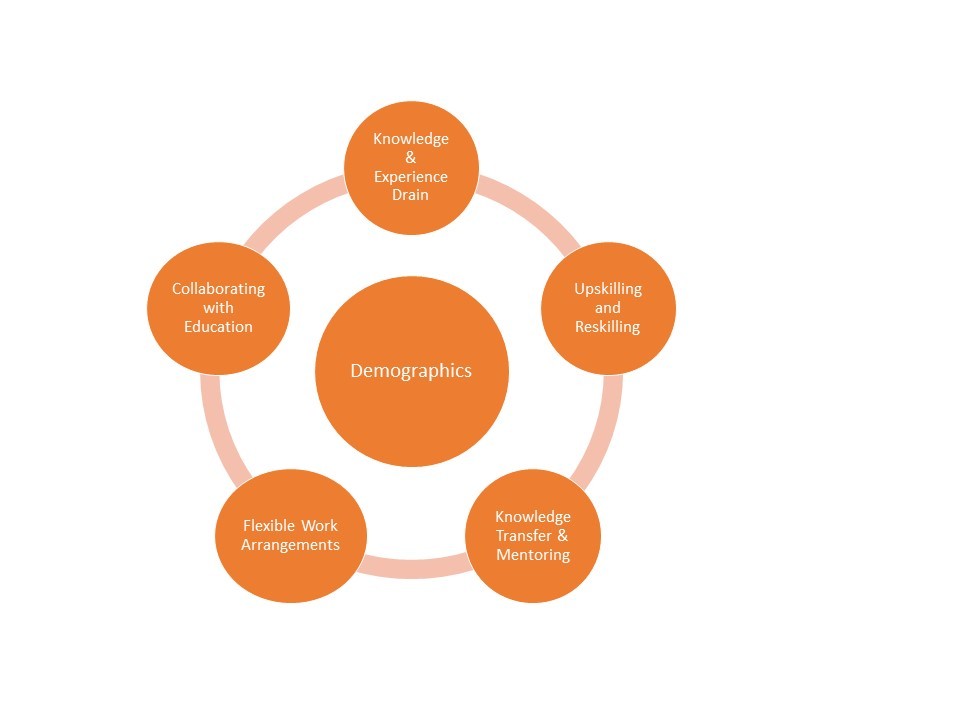
What Demographics Mean to Your Recruitment Plans!
As the UK’s population continues to age, businesses face a pressing challenge in bridging the skills gap created by this demographic shift. The increasing number of retirees and a shrinking pool of young workers have led to a significant impact on industries across various sectors with deepening implications.
Recent figures* show:
Last year the UK workforce increased by 330,680 and the government issued 195,000 work visas, suggesting an increase in labour supply of 525,680, but 500,000 55–65-year-olds have retired early.
There are 3 million workers waiting for operations.
There are currently 1.1 million advertised jobs.
Nett labour supply is roughly zero, but demand is over 1 million.
The impact of this is:
Knowledge and Experience Drain: One of the primary consequences of an aging population is the loss of valuable knowledge and experience within the workforce. Many seasoned professionals with specialist skills and deep industry expertise are reaching retirement age, creating a void that younger employees find challenging to fill. The departure of experienced workers is leading to a significant knowledge gap within businesses, making it crucial to capture and transfer their wisdom before they retire.
Upskilling and Reskilling: To address the broadening skills gap, businesses must prioritise recruitment, upskilling and reskilling initiatives. Upskilling involves providing training and development opportunities to existing employees to enhance their skills and competencies in line with the evolving job market. Reskilling, on the other hand, involves retraining employees in new areas to meet emerging demands. By investing in comprehensive and tailored training programs, businesses can equip their workforce with the necessary skills to fill the gaps left by retiring employees.
Knowledge Transfer & Mentoring: Creating opportunities for knowledge transfer and mentoring between experienced and younger employees can be invaluable in mitigating the effects of an aging population. Encouraging intergenerational collaboration allows for the sharing of tacit knowledge, lessons learned, and best practices. Mentoring programs enable older employees to pass on their expertise while younger workers gain valuable insights and guidance, fostering a culture of continuous learning and skill development.
This might mean bringing remote and hybrid workers back to the business on a more frequent basis to engage with more junior colleagues.
Flexible Work Arrangements: Adopting flexible work arrangements can be an effective strategy for attracting and retaining older employees. Many experienced professionals may desire phased retirement or part-time work options, allowing them to gradually transition into retirement while still contributing their skills and expertise. Offering flexible schedules, remote work options, and reduced hours can help retain the knowledge and experience of older workers, while also accommodating their changing needs and preferences.
Collaborating with Education: Collaborating with educational institutions and vocational training centres can create pathways to bridge the skills gap. By partnering with these institutions, businesses can actively influence the curriculum to align with industry requirements. Internship programs, apprenticeships, and cooperative education initiatives can facilitate the transfer of practical skills and real-world experiences to younger generations, ensuring they are better prepared to meet the demands of the workforce and act as a recruitment pathway into your business.
Conclusion:
The broadening skills gap resulting from an aging population presents significant challenges for businesses. By recognising the impact of this demographic shift and implementing targeted strategies, such as programmes of recruitment and talent management, knowledge transfer, upskilling initiatives, flexible work arrangements, and collaboration with educational institutions, you can proactively address the skills gap and create a resilient and adaptable workforce.
*Source Roger Martin-Fagg, Vistage
